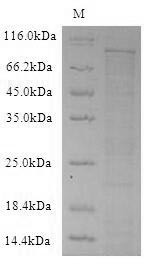Cookie-Einstellungen
Diese Website benutzt Cookies, die für den technischen Betrieb der Website erforderlich sind und stets gesetzt werden. Andere Cookies, die den Komfort bei Benutzung dieser Website erhöhen, der Direktwerbung dienen oder die Interaktion mit anderen Websites und sozialen Netzwerken vereinfachen sollen, werden nur mit Ihrer Zustimmung gesetzt.
Konfiguration
Technisch erforderlich
Diese Cookies sind für die Grundfunktionen des Shops notwendig.
"Alle Cookies ablehnen" Cookie
"Alle Cookies annehmen" Cookie
Ausgewählter Shop
CSRF-Token
Cookie-Einstellungen
FACT-Finder Tracking
Individuelle Preise
Kundenspezifisches Caching
Session
Währungswechsel
Komfortfunktionen
Diese Cookies werden genutzt um das Einkaufserlebnis noch ansprechender zu gestalten, beispielsweise für die Wiedererkennung des Besuchers.
Facebook-Seite in der rechten Blog - Sidebar anzeigen
Merkzettel
Statistik & Tracking
Endgeräteerkennung
Kauf- und Surfverhalten mit Google Tag Manager
Partnerprogramm

NEU
Bei Fragen nutzen Sie gerne unser Kontaktformular.
Bestellen Sie auch per E-Mail: info@biomol.com
Größere Menge gewünscht? Bulk-Anfrage
Bestellen Sie auch per E-Mail: info@biomol.com
Größere Menge gewünscht? Bulk-Anfrage
Organism: Mus musculus (Mouse). Source: in vitro E.coli expression system. Expression Region:... mehr
Produktinformationen "Dipeptidyl peptidase 4 (Dpp4), partial, mouse, recombinant"
Organism: Mus musculus (Mouse). Source: in vitro E.coli expression system. Expression Region: 29-760aa. Protein Length: Extracellular Domain. Tag Info: N-terminal 6xHis-SUMO-tagged. Target Protein Sequence: SKDEAAADSR RTYSLADYLK STFRVKSYSL WWVSDFEYLY KQENNILLLN AEHGNSSIFL ENSTFESFGY HSVSPDRLFV LLEYNYVKQW RHSYTASYNI YDVNKRQLIT EEKIPNNTQW ITWSPEGHKL AYVWKNDIYV KVEPHLPSHR ITSTGEENVI YNGITDWVYE EEVFGAYSAL WWSPNNTFLA YAQFNDTGVP LIEYSFYSDE SLQYPKTVWI PYPKAGAVNP TVKFFIVNID SLSSSSSAAP IQIPAPASVA RGDHYLCDVV WATEERISLQ WLRRIQNYSV MAICDYDKIN LTWNCPSEQQ HVEMSTTGWV GRFRPAEPHF TSDGSSFYKI ISDKDGYKHI CHFPKDKKDC TFITKGAWEV ISIEALTSDY LYYISNQYKE MPGGRNLYKI QLTDHTNVKC LSCDLNPERC QYYAVSFSKE AKYYQLGCWG PGLPLYTLHR STDHKELRVL EDNSALDRML QDVQMPSKKL DFIVLNETRF WYQMILPPHF DKSKKYPLLL DVYAGPCSQK ADASFRLNWA TYLASTENII VASFDGRGSG YQGDKIMHAI NRRLGTLEVE DQIEAARQFV KMGFVDSKRV AIWGWSYGGY VTSMVLGSGS GVFKCGIAVA PVSRWEYYDS VYTERYMGLP IPEDNLDHYR NSTVMSRAEH FKQVEYLLIH GTADDNVHFQ QSAQISKALV DAGVDFQAMW YTDEDHGIAS STAHQHIYSH MSHFLQQCFS LH. Purity: Greater than 90% as determined by SDS-PAGE. Endotoxin: Not test. Biological Activity: n/a. Form: Liquid or Lyophilized powder. Buffer: If the delivery form is liquid, the default storage buffer is Tris/PBS-based buffer, 5%-50% glycerol. If the delivery form is lyophilized powder, the buffer before lyophilization is Tris/PBS-based buffer, 6% Trehalose, pH 8.0. Reconstitution: We recommend that this vial be briefly centrifuged prior to opening to bring the contents to the bottom. Please reconstitute protein in deionized sterile water to a concentration of 0.1-1.0 mg/mL.We recommend to add 5-50% of glycerol (final concentration) and aliquot for long-term storage at -20 °C/-80 °C. Our default final concentration of glycerol is 50%. Customers could use it as reference. Storage: The shelf life is related to many factors, storage state, buffer ingredients, storage temperature and the stability of the protein itself. Generally, the shelf life of liquid form is 6 months at -20 °C/-80 °C. The shelf life of lyophilized form is 12 months at -20 °C/-80 °C. Notes: Repeated freezing and thawing is not recommended. Store working aliquots at 4 °C for up to one week. Relevance: Cell surface glycoprotein receptor involved in the costimulatory signal essential for T-cell receptor (TCR)-mediated T-cell activation. Acts as a positive regulator of T-cell coactivation, by binding at least ADA, CAV1, IGF2R, and PTPRC. Its binding to CAV1 and CARD11 induces T-cell proliferation and NF-kappa-B activation in a T-cell receptor/CD3-dependent manner. Its interaction with ADA also regulates lymphocyte-epithelial cell adhesion. In association with FAP is involved in the pericellular proteolysis of the extracellular matrix (ECM), the migration and invasion of endothelial cells into the ECM. May be involved in the promotion of lymphatic endothelial cells adhesion, migration and tube formation. When overexpressed, enhanced cell proliferation, a process inhibited by GPC3. Acts also as a serine exopeptidase with a dipeptidyl peptidase activity that regulates various physiological processes by cleaving peptides in the circulation, including many chemokines, mitogenic growth factors, neuropeptides and peptide hormones. Removes N-terminal dipeptides sequentially from polypeptides having unsubstituted N-termini provided that the penultimate residue is proline. Reference: "Structure of the mouse dipeptidyl peptidase IV (CD26) gene."Bernard A.-M., Mattei M.-G., Pierres M., Marguet D.Biochemistry 33:15204-15214(1994). Function: Cell surface glycoprotein receptor involved in the costimulatory signal essential for T-cell receptor (TCR)-mediated T-cell activation. Acts as a positive regulator of T-cell coactivation, by binding at least ADA, CAV1, IGF2R, and PTPRC. Its binding to CAV1 and CARD11 induces T-cell proliferation and NF-kappa-B activation in a T-cell receptor/CD3-dependent manner. Its interaction with ADA also regulates lymphocyte-epithelial cell adhesion. In association with FAP is involved in the pericellular proteolysis of the extracellular matrix (ECM), the migration and invasion of endothelial cells into the ECM. May be involved in the promotion of lymphatic endothelial cells adhesion, migration and tube formation. When overexpressed, enhanced cell proliferation, a process inhibited by GPC3. Acts also as a serine exopeptidase with a dipeptidyl peptidase activity that regulates various physiological processes by cleaving peptides in the circulation, including many chemokines, mitogenic growth factors, neuropeptides and peptide hormones. Removes N-terminal dipeptides sequentially from polypeptides having unsubstituted N-termini provided that the penultimate residue is proline.
| Schlagworte: | Dpp4, Cd26, Recombinant Mouse Dipeptidyl peptidase 4 (Dpp4), partial |
| Hersteller: | Cusabio |
| Hersteller-Nr: | CF007139MO |
Eigenschaften
| Anwendung: | Activity not tested |
| Konjugat: | No |
| Wirt: | E.coli in vitro |
| Spezies-Reaktivität: | mouse |
| MW: | 100.5 kD |
| Reinheit: | >90% (SDS-PAGE) |
Datenbank Information
| KEGG ID : | K01278 | Passende Produkte |
| UniProt ID : | P28843 | Passende Produkte |
| Gene ID | GeneID 13482 | Passende Produkte |
Handhabung & Sicherheit
| Lagerung: | -20°C |
| Versand: | +4°C (International: +4°C) |
Achtung
Nur für Forschungszwecke und Laboruntersuchungen: Nicht für die Anwendung im oder am Menschen!
Nur für Forschungszwecke und Laboruntersuchungen: Nicht für die Anwendung im oder am Menschen!
Hier kriegen Sie ein Zertifikat
Loggen Sie sich ein oder registrieren Sie sich, um Analysenzertifikate anzufordern.
Bewertungen lesen, schreiben und diskutieren... mehr
Kundenbewertungen für "Dipeptidyl peptidase 4 (Dpp4), partial, mouse, recombinant"
Bewertung schreiben
Loggen Sie sich ein oder registrieren Sie sich, um eine Produktbewertung abzugeben.
Zuletzt angesehen


